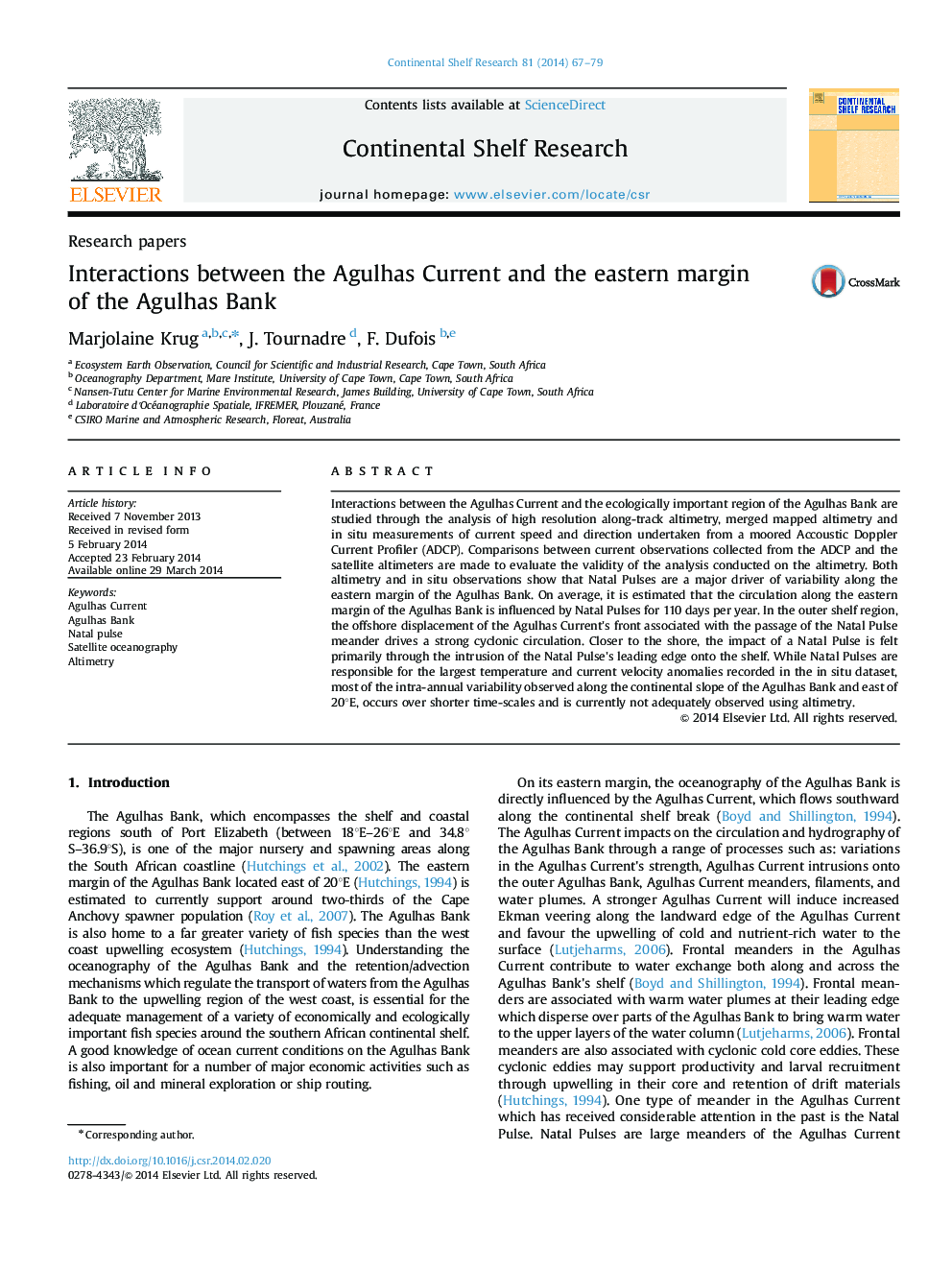| Article ID | Journal | Published Year | Pages | File Type |
|---|---|---|---|---|
| 4531905 | Continental Shelf Research | 2014 | 13 Pages |
•The Agulhas Current strongly influences the circulation of the Agulhas Bank.•The influence of the Agulhas Current is strongest during Natal Pulse events.•Natal Pulses impact the Agulhas Bank circulation for 110 days per year on average.•Natal Pulses could be instrumental in maintaining the cool ridge.•Sub-sampling severely limits Altimetry in the Agulhas Bank region.
Interactions between the Agulhas Current and the ecologically important region of the Agulhas Bank are studied through the analysis of high resolution along-track altimetry, merged mapped altimetry and in situ measurements of current speed and direction undertaken from a moored Accoustic Doppler Current Profiler (ADCP). Comparisons between current observations collected from the ADCP and the satellite altimeters are made to evaluate the validity of the analysis conducted on the altimetry. Both altimetry and in situ observations show that Natal Pulses are a major driver of variability along the eastern margin of the Agulhas Bank. On average, it is estimated that the circulation along the eastern margin of the Agulhas Bank is influenced by Natal Pulses for 110 days per year. In the outer shelf region, the offshore displacement of the Agulhas Current׳s front associated with the passage of the Natal Pulse meander drives a strong cyclonic circulation. Closer to the shore, the impact of a Natal Pulse is felt primarily through the intrusion of the Natal Pulse׳s leading edge onto the shelf. While Natal Pulses are responsible for the largest temperature and current velocity anomalies recorded in the in situ dataset, most of the intra-annual variability observed along the continental slope of the Agulhas Bank and east of 20°E, occurs over shorter time-scales and is currently not adequately observed using altimetry.
